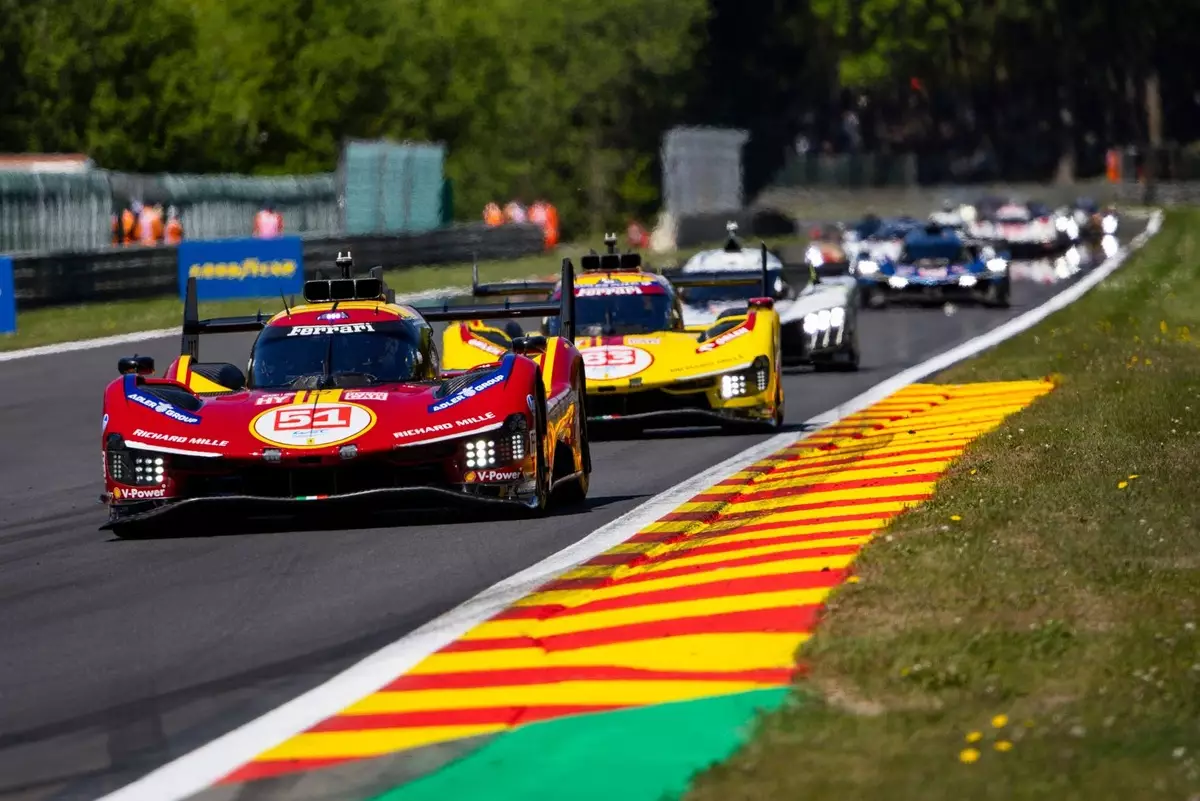The Spa 6 Hours race was nothing short of a thrilling spectacle, showcasing not just the technical prowess of the vehicle and team dynamics but also the sheer excitement that endurance racing brings. Ferrari’s trio—James Calado, Antonio Giovinazzi, and Alessandro Pier Guidi—emerged victorious in this high-stakes challenge, clinching the win by a mere four seconds from their own sibling entry, the 499P Le Mans Hypercar, driven by Nicklas Nielsen, Miguel Molina, and Antonio Fuoco. The closely contested race further amplified the iconic brand’s rich legacy in motorsport, firmly establishing their dominance while simultaneously illuminating the intricate rivalries that define this class of racing.
This year’s race was not a straightforward parade for the Scuderia; despite Ferrari’s commanding presence during the qualifying rounds, where they effortlessly monopolized the top positions in Hyperpole, the race unfolded more as a battlefield among fierce competitors. Alpine, BMW, and Peugeot, each fully prepared, turned Spa into a proving ground of strategy, endurance, and raw talent. The unpredictability of endurance racing was palpable, as the lead changed hands, and tactical maneuvers unfolded over the grueling six-hour duration.
Strategic Mastery and a Fight to the Finish
The contest intensified dramatically after the second of two safety car periods, with about an hour and 51 minutes remaining on the clock. The team dynamic within the Ferrari camp showcased the remarkable synergy between the pilot trio, as they navigated through complex strategies to challenge their rivals effectively. Pier Guidi, driving car #51, demonstrated both skill and aggression as he overcame a substantial six-second gap to seize the lead. This was not merely a race of speed; it reflected the complexity of timing, highlighting how race strategies can define the outcome.
As the sudden pit stops unfolded towards the end, the race dynamics shifted further. Tackling the intricacies of fuel management, both Ferraris executed strikingly different strategies in the final moments; Pier Guidi seized the opportunity presented to him, showcasing an aggressive driving style to minimize his time away from the track. This rapid adjustment was pivotal—he re-emerged from his pit stop with an impressive 11-second lead over his teammate. Meanwhile, Nielsen struggled to regain his pace after transitioning into a fuel-saving mode, demonstrating the often unpredictable and fluctuating nature of endurance races.
Despite the dazzling performances, challenges arose for others, notably for the Alpine A424 LMDh. A slow puncture incurred during crucial moments stifled their potential podium finish. It was indeed a winding road for Alpine, who grappled with their own array of set-backs and tactical blunders that hindered what could have been a conspicuous display of automotive advancement.
Team Dynamics and Unforeseen Setbacks
However, the enchanting yet relentless pace was not limited to Ferrari; BMW’s #20 entry, spearheaded by star drivers René Rast and Robin Frijns, initially held the lead before suffering an unwelcome brake malfunction that led to a heart-wrenching retirement in the race’s closing hour. This series of events serves to illustrate that preparation must encompass not only speed but also reliability, a vital component that can either launch a team to triumph or derail their aspirations in an instant.
Peugeot’s challenge also saw its fair share of drama, with multi-strategy fueling decisions intended to optimize their race outcome ultimately unraveling due to tactical misjudgments. A collision involving their #94 entry amid maneuvers to reclaim lost ground further exacerbated the team’s distress, underscoring how the razor-thin margins in racing can lead to catastrophic consequences.
With Toyota’s GR010 HYBRID LMH finishing fourth despite subpar qualifying, the overall performance of racing teams demands scrutiny. Their performance reveals a chasm between qualifying substance and race execution, raising questions about consistency and adaptability in the ever-changing dynamics of endurance racing environments.
Everyone involved in the Spa 6 Hours left with tales of intense competition, missed opportunities, and unshakeable ambition. As the sun set on Spa-Francorchamps, Ferrari’s victory not only symbolized individual prowess but also a collective triumph of strategy, resilience, and competitive spirit, encapsulating the essence of endurance racing.


Leave a Reply